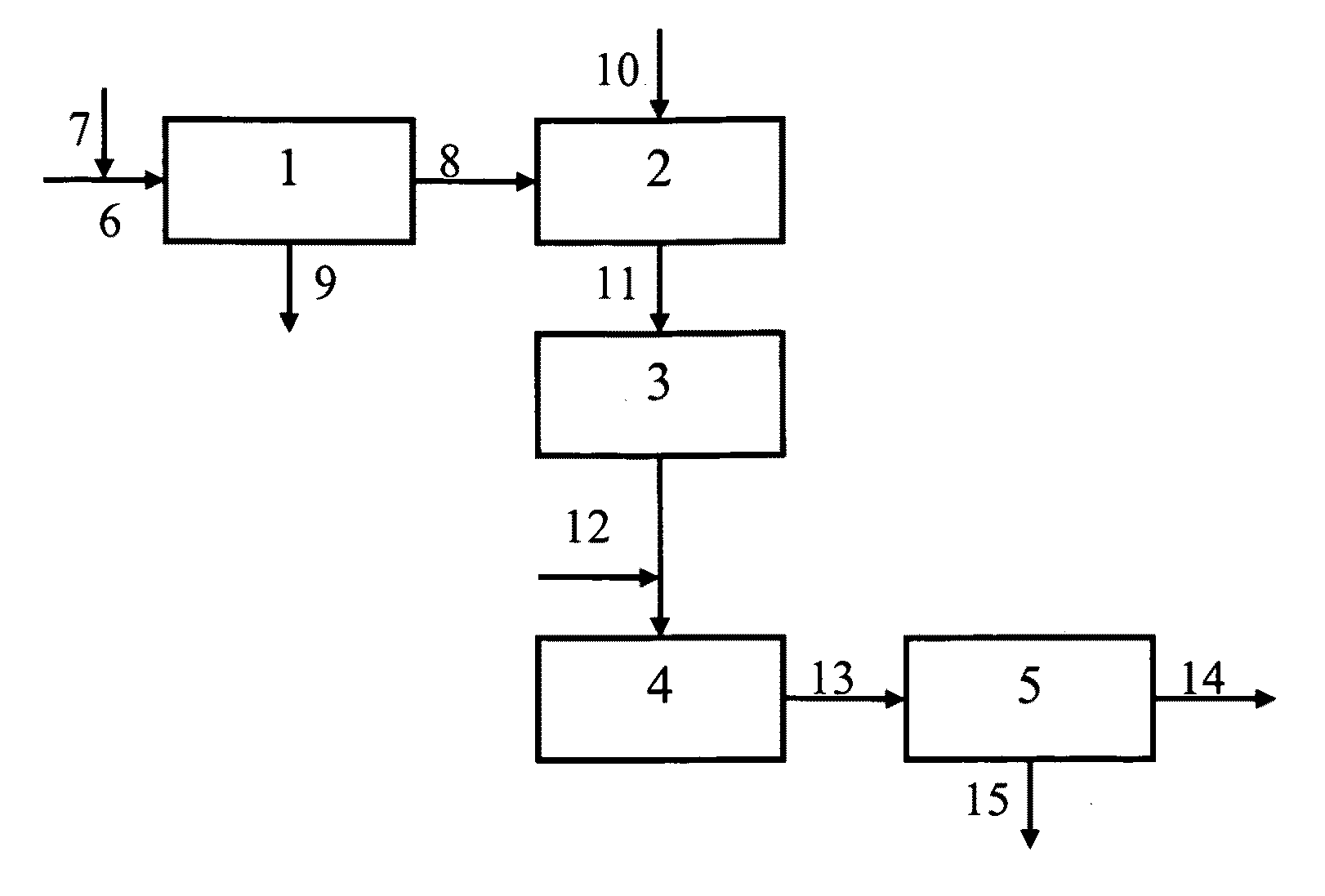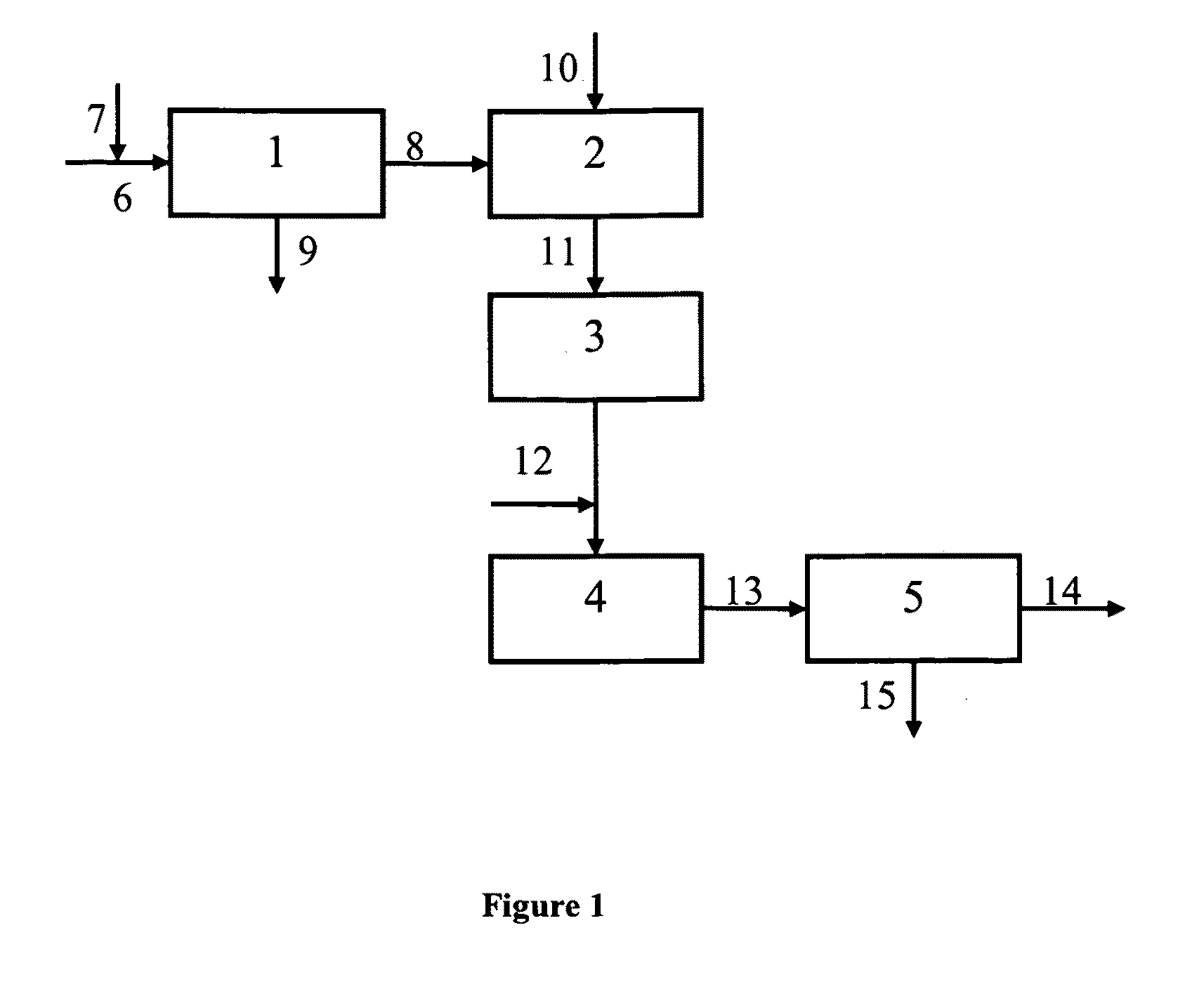Combined process of peroxide bleaching of wood pulps and addition of optical brightening agents
a peroxide bleaching and optical brightening agent technology, applied in the field of combined hydrogen peroxide bleaching process, can solve the problems of increasing production cost exponentially, and the cost of conventional peroxide bleaching in these cases would become prohibitively expensive, and achieve the effect of improving the bleaching process
- Summary
- Abstract
- Description
- Claims
- Application Information
AI Technical Summary
Benefits of technology
Problems solved by technology
Method used
Image
Examples
example 1
[0037]Equivalent to 25 grams of o.d. mill chelated TMP pulp from a mill in Eastern Canada (66 ppm Mn, 56% ISO initial brightness) was mixed in a polyethylene bag with 2.8% NaOH, 3.5% silicate, 6.0% H2O2, 0.4% OBA (Tinopal UP from CIBA Chemicals). The bag, along with its contents was placed in a temperature bath at 70°. Other bleaching conditions were 3 hrs, 30% pulp consistency.
[0038]After the completion of the required reaction time, a portion of the pulp slurry was transferred from the bag to a beaker, diluted, and neutralized with sulfurous acid to pH 5. A handsheet was then made following TAPPI test method T272 [12], air-dried and determined for brightness according the TAPPI method T525 [13]. The brightness of the resulting pulp was 82.8% ISO.
[0039]Under otherwise the same procedure and conditions as above, however no OBA was added, the brightness was 80.7% ISO. Therefore, it can be concluded that the addition of 0.4% OBA in the bleaching process significantly improves the pulp...
example 2
[0040]The same pulp sample was used as in Example 1, and the same procedure followed, however, various amounts of OBA charges were used. The results are shown in Table 1.
TABLE 1Brightness with OBAOBA chargeaddedBrightness without OBA(%)(% ISO)(% ISO)0.281.780.70.884.280.7
[0041]These results support the conclusion that the OBA addition to the peroxide bleaching process can effectively increase the pulp brightness.
example 3
[0042]Equivalent to 10 grams o.d. mill chelated aspen CTMP (HYP) from a mill in Western Canada was mixed in a polyethylene bag with 4.0% NaOH, 2.6% silicate, 0.05% Epsom salt (MgSO4.7H2O), 6.2% H2O2, various amounts of OBA (Tinopal UP from CIBA Chemicals). The bag, along with its contents, was placed in a temperature bath at 80° C. The other bleaching conditions were 2 hrs, 17% pulp consistency.
[0043]After the completion of the required reaction time, a portion of the pulp slurry was transferred from the bag to a beaker, diluted, and neutralized with sulfurous acid to pH 5. A handsheet was then made following TAPPI test method T272 [12], air-dried and determined for brightness. The same pulp sample was subjected to the peroxide bleaching without the addition of OBA under otherwise the same conditions. The results are given in Table 2.
TABLE 2Brightness withOBABrightnessBrightness with OBAOBAadded to peroxidewithoutadded after peroxidechargestageOBAbleaching(%)(% ISO)(% ISO)(% ISO)0.2...
PUM
| Property | Measurement | Unit |
|---|---|---|
| Fraction | aaaaa | aaaaa |
| Fraction | aaaaa | aaaaa |
| Fraction | aaaaa | aaaaa |
Abstract
Description
Claims
Application Information
 Login to View More
Login to View More - R&D
- Intellectual Property
- Life Sciences
- Materials
- Tech Scout
- Unparalleled Data Quality
- Higher Quality Content
- 60% Fewer Hallucinations
Browse by: Latest US Patents, China's latest patents, Technical Efficacy Thesaurus, Application Domain, Technology Topic, Popular Technical Reports.
© 2025 PatSnap. All rights reserved.Legal|Privacy policy|Modern Slavery Act Transparency Statement|Sitemap|About US| Contact US: help@patsnap.com



